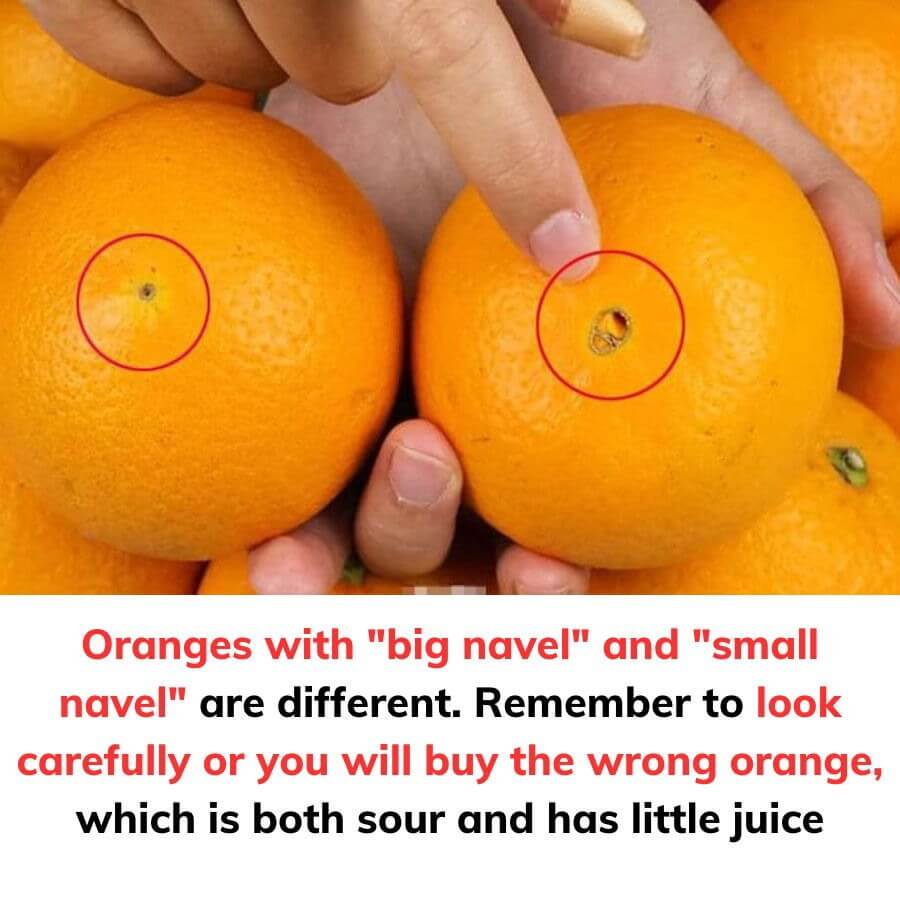When selecting oranges at the market or grocery store, it’s important to pay attention to one small detail that can make a big difference—the size of the navel. Some oranges feature a prominent, deep-set navel, while others have only a small dot at the bottom. This seemingly minor distinction can tell you a lot about the fruit’s quality, sweetness, and juiciness.
Large Navel vs. Small Navel Oranges
Large navel oranges typically have a noticeable indentation covered by a white membrane when sliced. Inside, they contain fewer juicy segments and more thick peel or fibrous sections. The flavor is often bland or less sweet, and they usually have a lower juice content, making them less desirable for fresh consumption or juicing.
In contrast, small navel oranges tend to have a thinner peel and a more uniform structure. These oranges are usually more aromatic, sweeter, and significantly juicier. The small navel is less pronounced, but the quality inside speaks volumes. For a delicious citrus experience, small navel oranges are the better choice.
How to Pick the Best-Tasting Oranges
While the navel size is a helpful clue, several other factors can guide you to choosing high-quality, flavorful oranges.
1. Look at the Color
A rich, deep orange color is often a good indicator of ripeness and sweetness. Within the same variety, the darker the skin, the more sunlight the orange has absorbed, which helps increase its natural sugar content. These oranges are typically the juiciest and most flavorful.
2. Pay Attention to Shape
You’ll find oranges in various shapes—some perfectly round, some slightly oval, and others with rough or bumpy skin. When flavor is your priority, opt for the round ones. They tend to be plump, juicy, and sweet compared to their oddly shaped counterparts.
3. Feel the Weight and Firmness
Holding the orange in your hand is one of the best ways to judge its quality. A good orange will feel heavier than it looks, signaling that it’s full of juice. If the fruit feels unusually light, it may be dry inside or past its prime due to extended storage.
Gently squeeze the orange as well. Fresh, ripe oranges will have a slight give when pressed. If the peel is tough and doesn’t yield at all, the fruit likely has a thick rind and less flesh, making it less enjoyable to eat.
Final Thoughts
Choosing the right orange doesn’t require expert knowledge—just a little attention to detail. By examining the navel, color, shape, and weight, you can easily identify the sweetest, juiciest oranges every time. Whether you’re buying for snacking, juicing, or cooking, these tips will ensure you get the most out of your citrus purchase.
